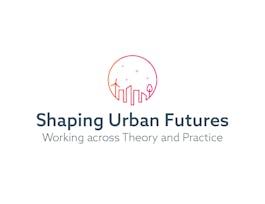More than half of world’s population lives in cities while only 5% did so in the 18th century. The rapid urbanisation has resulted in for example inadequate infrastructure, physical inactivity, gentrification, air pollution, and growing numbers of slum dwellers. All factors challenging health and wellbeing of the people living in the cities. In addition, when addressing climate change it has become of paramount importance to look at mitigation and adaptation investments tailored to the urban context.



Urbanisation and Health - Promoting Sustainable Solutions



Instructors: Flemming Konradsen
Sponsored by Barbados NTI
5,827 already enrolled
(161 reviews)
Skills you'll gain
Details to know

Add to your LinkedIn profile
14 assignments
See how employees at top companies are mastering in-demand skills


Earn a career certificate
Add this credential to your LinkedIn profile, resume, or CV
Share it on social media and in your performance review

There are 5 modules in this course
This module will provide you with an overview of the key determinants of urban health. We will take you on a journey mainly through the European history of urbanisation and urban planning to reflect on the way health concerns and wellbeing have been considered and how general trends here have influenced the design of cities all across the world. Finally, we will dive into the causes and effects of air pollution and noise, two of the major health hazards in today’s urban settings. We hope the readings and resources will inspire you to begin exploring your own urban setting in terms of e.g. density and different kinds of pollution.
What's included
5 videos6 readings4 assignments3 discussion prompts
The world population is undergoing major changes. The share of urban population is increasing, as does that of people aged 65 or over. In this module we will focus on the concept of ageing across the lifecycle, and on how different features of urban environment influence health and the ageing process. Furthermore, we will explore the phenomenon of gentrification and its impact on health in different segments of our populations. In the reading and resources section you will find shortcuts to databases and cases from different cities.
What's included
3 videos6 readings3 assignments2 discussion prompts
On many different levels evidence confirm how crucial the integration of elements of nature in the urban design is to sustain physical as well as mental health. In this module you will be introduced to blue and green planning as an instrument to promote health and mitigate and adapt to climate changes. We will look at the benefits of green space and small-scale urban farming from a community and health perspective. You will also meet examples of how new ways of designing public space motivates citizens to lead a daily physically active and healthy life. In the readings and resource section you will find more in depth material on nature based solutions and effects on climate change.
What's included
4 videos7 readings4 assignments2 discussion prompts
How can we align urban planning with UN’s Sustainable Development Goals? In an urban context, how can we bend the curve of obesity? How can we reduce mortality and disease associated with the layout of the urban space and namely the way we design our transport systems? In this module you will meet stakeholders who are globally engaged in the development and implementation of sustainable approaches to resolve some of the major health related challenges that cities are facing globally. Further, you will get access to tools and frameworks for your own use
What's included
3 videos5 readings3 assignments1 discussion prompt
Maybe you are already involved in activities that support a healthy and sustainable development in your own neighborhood or city, or even across cities. Or maybe you would like to get started or take action in a new way. Now is your chance to mature and consider how you can best convince others to engage in your idea! In the previous modules we have identified the key determinants to urban health and provided examples of prevailing methods to come up with sustainable solutions. We now add to the palette some overall principles and frameworks commonly used for innovation to improve health. You will also be introduced to some tools to effectively communicate your specific idea, including ways to visualize the data you build your arguments around. In the resource section you will find a variety of toolkits and design guides and we invite you to study each of them and consider which parts could be helpful to identify and come up with a suggestion for a sustainable solution to a specific problem you are engaged in.
What's included
3 videos1 reading1 discussion prompt
Instructors


Why people choose Coursera for their career




Learner reviews
161 reviews
- 5 stars
84.14%
- 4 stars
13.41%
- 3 stars
1.82%
- 2 stars
0%
- 1 star
0.60%
Showing 3 of 161
Reviewed on Jul 7, 2022
The course was excellent, added a lot of information to my previous knowledge. I thank all the professors and producers of this course.
Reviewed on Jun 27, 2022
Grateful for this fulfilling journey in such a noble field!
Reviewed on Sep 1, 2022
Great Course. The knowledge gained from this course will help me further research to improve the health situation in Nigeria.
Recommended if you're interested in Health

Indian Institute for Human Settlements

University of Michigan

University of Lausanne

University of Lausanne

Open new doors with Coursera Plus
Unlimited access to 10,000+ world-class courses, hands-on projects, and job-ready certificate programs - all included in your subscription
Advance your career with an online degree
Earn a degree from world-class universities - 100% online
Join over 3,400 global companies that choose Coursera for Business
Upskill your employees to excel in the digital economy


















